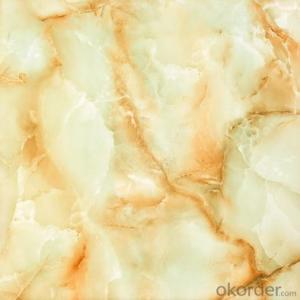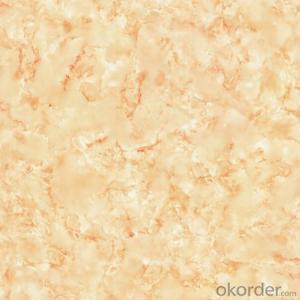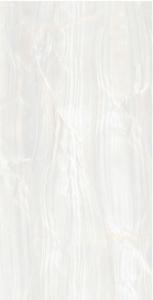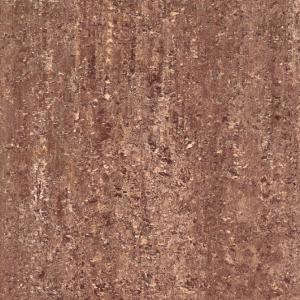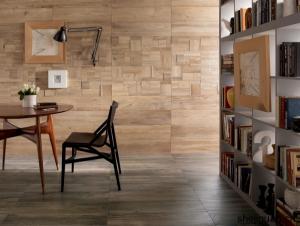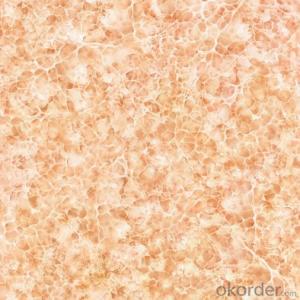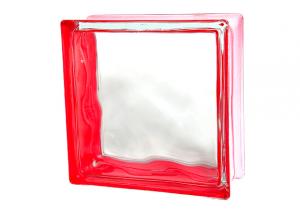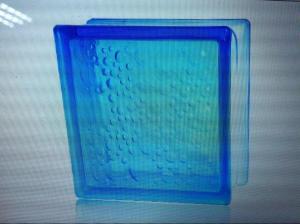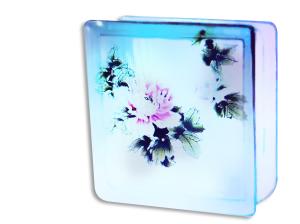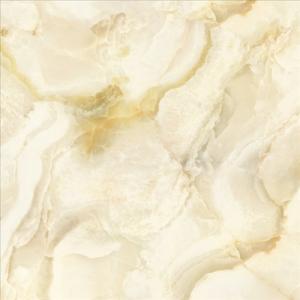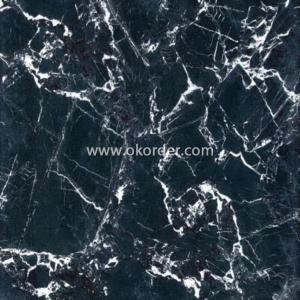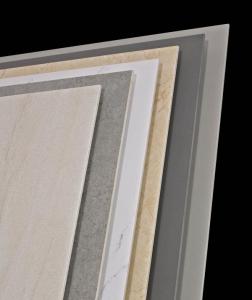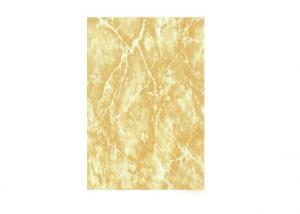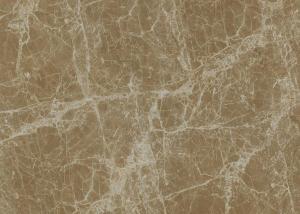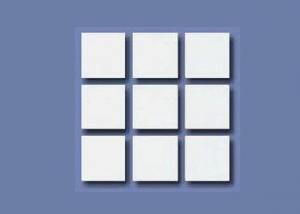Super Glazed Porcelain Vitrified Tiles 4009
- Loading Port:
- China main port
- Payment Terms:
- TT OR LC
- Min Order Qty:
- 1200 m²
- Supply Capability:
- 10000 m²/month
OKorder Service Pledge
OKorder Financial Service
You Might Also Like
Quick Details
| Type: | Tiles | Place of Origin: | Guangdong China (Mainland) | Brand Name: | Sunshine |
| Model Number: | 4009 | Size: | 600 x 600mm,800 x 800mm | Material: | Porcelain Tiles |
| Usage: | Interior Tiles | Function: | Antibacterial,Non-Slip | Surface Treatment: | Polished Tiles |
| Technique: | Vitrified Tiles | Tile Type: | Floor Tiles | Color: | beige ,black ,white |
| Thickness: | 9.5mm | Water absorbtion: | <0.5%< p=""> | Design: | Various |
| Type details: | Polished Porcelain Vitrified Tiles With Price | Delivery time: | Quick ,on time |
Packaging & Delivery
| Packaging Detail: | White carton with wooden pallet with fumigation in 20'GP container |
| Delivery Detail: | 15-25 days after receiving deposit |
Product Description
Product Types:
1. Spot Feeder Porcelain Floor Tiles Series,
2. Micro Powder Porcelain Floor Tiles Series,
3. Unpolished Salt and Pepper Porcelain Floor Tiles Series,
4. Polished Salt and Pepper Porcelain Floor Tiles Series,
The Advantage of Vitrified Tiles with price:
1.No Radioactivity.
2.No color difference.
3.Low water absorption.
4.Resistence to bending strength.
5.Resistence to fading ,discoloration.
6.Glazed surface ,top grade quality.
7. Equipment from German and Italy.
8.It is good for house decoration of interior flooring and wall tile bulding materil , kitchen wall tile building materils ,bathroom wall tiles build material ,Balcony ,super market ,house design ,shopping mall ,warehouse construction material
- Q:This is a new house and they put 16 inch tiles in the bathrooms, which I don't care for. The floors are fine as far as leveling goes, but I would like to put 12 inch tiles directly over the 16 inch ones. Would there be any problems?
- you can do what you want, after all it is your house and your money,,, however,,, tile over tile is not recommended at all. the biggest problem with tile over tile is a matter of adhesion between the two layers. the floor leveler needed to raise the height of the old grout joints to level and the mortar used to bed the new tiles, will, for a short time adhere to the clean finished face of the old tiles. as time marches on, the adhesive bond between the mortar and the fished face will break loose. when that happens you will start to hear a hollow sound as you walk across the floor, you may also start to feel a bit of sponginess in the floor,,, then the problems begin in ernest with removing two layers of tile ( not hard to do, just more debris ), disposing of the materials, dealing with a door that was cut off to allow for the extra height, dealing with reinstalling baseboards, dealing with thresholds that no longer fit properly and need to be replaced, dealing with old caulking lines that will no longer be hidden and still you have to install a new floor covering.
- Q:My dad layed tiles in his kitchen recently. He had some plywood type stuff that he layed them on top of so they are on a flat, even surface. But then someone told him he should have put a netting type stuff underneith the tiles too, to keep them from breaking. Is that very important, will his floor be ruined now?
- Its called wire mesh. Its not used as much anymore. What makes tiles or grout crack is the wood below the tiles. If the floor joists are too far apart and the plywood is not thick enough it can cause the floor to move. Even a little bit of movement can cause the tiles and the grout to crack. The wire mesh will not help if the floor moves.
- Q:I was told that you can use slate (indoor/outdoor flooring) tiles outside on walkway if you mortar them over a concrete walkway.Do they have to be mortared to a concrete walk or is there another way to place the tiles?Part 2. Can you use concrete you mix at home from a bag for laying a new small concrete walkway or do you have to order mixed concrete from a concrete supplier?
- Walkway Tiles
- Q:and people will rip up the 12X12 tile floor and replace it with smaller tiles? Just need a few opinions.
- That size or a variation of that size ( you ll see some 13x13 around) will be here for a long time to come. Its been around for a long time now. The new way to make modular tiles from that size will ensure it stays around longer. This size also fits well into large areas as well as slightly smaller areas. Colors will be the only changes that will occur , as they always do. Any questions you can e mail me through my avatar and check my qualifications there. GL
- Q:I‘d like to recover my kitchen floor with linoleum tiles - mainly because they are relatively inexpensive, I can do it myself and I can do it at my pace (not moving all of my appliances out in a day). Has anyone used them and if so, what do you like/dislike about them?
- I think you're talking about Peel and Stick Tiles? If so, I'm not sure I'd use them in your kitchen unless you are an extremely clean person. I used Peel and Stick tiles in a rental house we own. The tenant got so much grease under the tiles by the oven that the tiles came unglued and were sliding around. Spaces of the old floor were showing between the tiles, and the spaces between were filthy. These tiles came up really easily, but the tiles in the rest of the kitchen were extremely hard to remove. It took days of work with a screw driver to peel those off. After I had removed all the tiles, I couldn't get any more Peel and Stick tiles to stick to the floor no matter how much I cleaned it. We finally used Vinyl Sheet flooring. (The stuff that is one large piece of vinyl.) We figured that the vinyl sheet doesn't have to be glued down and there aren't any individual tiles to pull apart from each other. The vinyl sheet flooring is still inexpensive. You can get it at some Big Box stores. It's a little tricky to lay the vinyl. We made a template using pages from a magazine. We taped them together, then moved the template carefully to the vinyl sheet. We then cut the sheet and moved the flooring to the kitchen. This worked, and I think it will survive better than then Peel and Stick tiles did. You would have to move all the appliances out of the kitchen in order to lay this type of flooring, though.
- Q:I have old, crumbly tile as a subfloor in my apartment. I recently put in vinyl flooring when I took my carpeting out. It now looks as if this tile (wood-like vinyl planks) are taking the shape of the subfloor, which was not perfectly even. I don‘t like that I see shadows of peaks and valleys in the new flooring in certain light. It also doesn‘t feel even when I walk on it barefoot, but I‘m extremely particular.1. Should a coating have been applied to even-out the old tile BEFORE the vinyl flooing was installed? (the company didn‘t want to take these up as they felt it was asbestos. the worker who installed the new floor said the old floor did not need a coating)2. Was this vinyl tile installed correctly?3. If it wasn‘t installed correctly, could this affect the vinyl tile/planks over time -- could it warp, perhaps? 4. What do I do if it was installed incorrectly and the company does not do anything about it without a fee?? (There‘s a warantee on the floor IF it was installed correctly only)
- The new vinyl floor should only have been applied to a good, sound and stable substrate. If the tiles underneath were chipping, flaking, bubbling or falling apart there is no way the new flooring should have been applied. Most asbestos tile comes up easily and requires basic Personal Protective Equipment. Not like asbestos pipe installation...the nasty stuff. Another option is to remove the loose tile and fill with a latex floor patch...not the best option, but OK for most. A better option is a 1/4 plywood underlayment on top of the tile and under the new vinyl. You still need to remove lose or bad tile and level uneven areas, but the new plywood underlayment will give you a much more stable surface. You'll need to prime the plywood with a floor primer and also consider a new threshold to account for the elevation difference.
- Q:I have a kitchen that currently has 20X20 tile The kitchen has 40 tilesWhat is the square feet of the kitchen?
- Going by your tile count and size given only,( not including grout lines and tile isn t always the exact size , you have 111 s/f 20x 20=400 square inches 400 divided by 144 ( inches in a s/f) is 2.77 s/f per tile 2.77 x your forty tiles is 111.11 s/f THAT is the math But you really need a kitchen measurement for an accurate measurement Any questions you can e mail me through my avatar and check my qualifications there.. GL
- Q:How easy is it to tile a kitchen floor. Plus would you lay the tiles directly onto the concrete sub floor or lay concrete boards or chipboards underneath. I would also like to continue this to the hallway and under stairs. Thanks.
- Depending on the age of the cement subfloor, it would be my first choice, even if I had to prep it first to insure a good bond. Definitely not cement board, it's not designed or engineered to be walked on, the results downstream would be disastrous. There is a grade of board specifically called underlayment, and it would be my second choice. It needs to be nailed down to cement subfloor about every 6 inches in both directions, very tedious. Not so bad on wood, can be screwed down.This is not hard job, just hard work. Hands and knees, get up to cut a piece, back down to hands and knees. Spread mortar or adhesive, set tile, check for level, spread - set - level, over and over. And level in both directions, North - South, and East - West, and level from tile to tile as well. Really good tile setters make very good money. Very important for you to know: floor tile is thicker than wall tile. It should be 3/8 inch minimum, or 9 mm. Wall tile is generally thinner, and will crack under the stress of weight on it.
- Q:Our house has Asbestos floor tiles throughout. (I had them tested, and they definitely contain asbestos.)The dilemma: Currently these tiles are covered with carpet. The carpet is old and ugly and needs to be replaced. We want to replace it with Laminate flooring.I‘m worried about pulling up the carpet tacks at the edges.Is there a safe way to do that?Also, is it safe to put Laminate flooring over asbestos tiles?
- Asbestos okorder and I can provide homeowner consultation on how to safely deal with asbestos floor tile in the home. I can cite study data showing exposure levels associated with certain floor tile removal tasks.
- Q:the tile is like a plastic what can i use to renstall the tile it is on the wall in the shower how long do i have to let the wall dry before putting tile back up and how long will i need to let it dry before using the shower again
- Yes, you need to have a dry underlayment before reinstalling tile. However, plastic tile in the shower sounds like bad news. If the underlayment is simply plaster wallboard, then you need to replace the shower walls. You need special board designed for wet applications; ask at your home center. You should really redo the tile with ceramic. An alternative is to install a fiberglass shower stall. These are much less labor intensive. If the underlayment is water-rated, then apply tile cement and stick the thing back on. Grout? You may need to redo that. It comes in many colors so you can get a good match. However, if one tile has popped off, then others are probably ready to go, so consider redoing the shower with a more permanent solution.
1. Manufacturer Overview |
|
|---|---|
| Location | |
| Year Established | |
| Annual Output Value | |
| Main Markets | |
| Company Certifications | |
2. Manufacturer Certificates |
|
|---|---|
| a) Certification Name | |
| Range | |
| Reference | |
| Validity Period | |
3. Manufacturer Capability |
|
|---|---|
| a)Trade Capacity | |
| Nearest Port | |
| Export Percentage | |
| No.of Employees in Trade Department | |
| Language Spoken: | |
| b)Factory Information | |
| Factory Size: | |
| No. of Production Lines | |
| Contract Manufacturing | |
| Product Price Range | |
Send your message to us
Super Glazed Porcelain Vitrified Tiles 4009
- Loading Port:
- China main port
- Payment Terms:
- TT OR LC
- Min Order Qty:
- 1200 m²
- Supply Capability:
- 10000 m²/month
OKorder Service Pledge
OKorder Financial Service
Similar products
New products
Hot products
Related keywords


